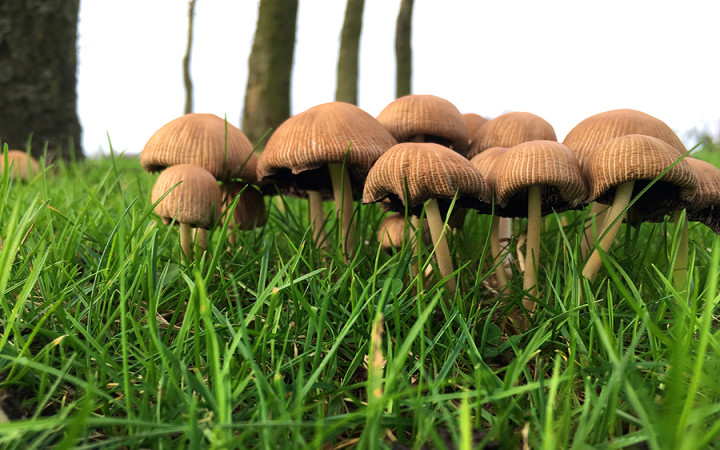Are you hungry? We are! When we start WONDERing, it's not long before our tummies start growling for some food.
When we're really hungry, we crave pizza. There's just something about that combination of crust, sauce, and cheese that satisfies like nothing else can.
What's your favorite pizza topping? We prefer pepperoni with a few of our favorite vegetables, like green peppers and onions. If you're a fan of deluxe pizzas, then there's another topping you might enjoy: mushrooms!
Have you ever eaten mushrooms on pizza? Perhaps you've tried mushrooms with another dish, such as Salisbury steak or chicken Marsala. If you've never had mushrooms before, you don't know what you're missing!
If you look at the from a pizza joint, you'll likely find mushrooms listed with the vegetables. After all, they look and taste quite a bit like a vegetable. But are they really vegetables?
According to the United States Department of Agriculture, mushrooms are classified as vegetables, since they provide many of the same nutrients. Botanically, however, mushrooms are certainly not vegetables. In fact, they're technically not even plants.
Instead, mushrooms are fungi. They don't need light to grow, and they don't have seeds, roots, or stems. The initial growth of a fungus occurs underground. When moisture and temperature conditions are right, mushrooms spring forth from the ground.
You may have seen mushrooms in your yard from time to time. You can also find them throughout the woods of most forests. Some mushrooms, however, only grow in certain places, such as on living trees or decomposing logs on the ground.
Mushroom hunting has become a popular hobby for people of all ages all over the world. Many families love to go for a hike in the woods, searching for mushrooms to bring home to cook with their favorite dishes.
If you're lucky, you might find a bunch of the most popular edible varieties of mushrooms, such as morel, portabella, porcini, shiitake, and chanterelle. North America alone has several thousand different species of mushrooms.
While almost all are edible, there are about 250 varieties that are poisonous. Unfortunately, some of the poisonous varieties look quite similar to popular edible varieties. Learning the difference between edible and poisonous varieties takes some time. It's best to learn from an expert in the field or use a detailed field guide to help identify mushrooms in the wild.
Experts warn that you should never eat a mushroom unless you are certain that it is edible and not poisonous. An old saying often quoted by mushroom hunters is that "all mushrooms are edible, but some only once."
The consequences of eating poisonous mushrooms can be deadly. For example, mushrooms from the genus Amanita can be especially toxic. You should never guess about the safety of a mushroom. If you're not sure, don't eat it!
As for the many types of popular edible mushrooms, though, they feature a wide variety of flavors. In addition to being tasty, they also tend to be nutritious. Many mushrooms are good sources of potassium, selenium, iron, vitamin B, and many other minerals. Some mushrooms are also thought to neutralize free radicals, which could make them useful in fighting cancer.





